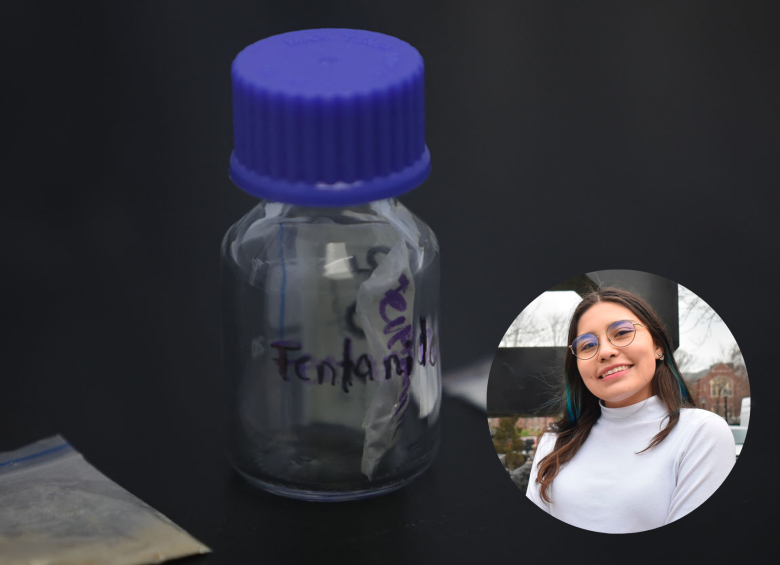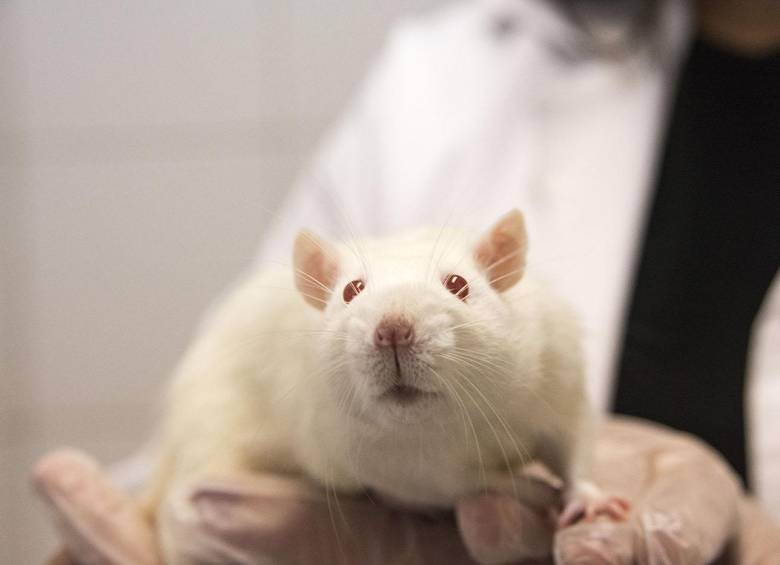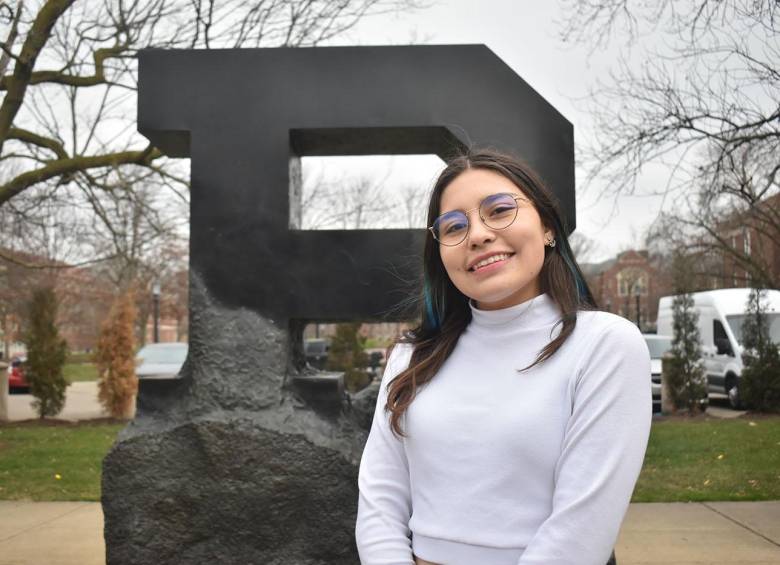Fentanyl use could lead to "binge drinking", according to study in which Colombian biologist participated

Fentanyl is a drug 100 times stronger than morphine itself and kills 110,000 people a year. In the picture, Jimena Sotelo, one of the researchers in this study. Photo courtesy Unimedios
Research led by Purdue University, in the United States, describes what happens in the brain after mixing fentanyl -a drug 100 times stronger than morphine and which causes 110,000 deaths a year- with alcohol, one of the most common substances present at parties and which people tend to ignore when consuming other types of substances.
Fentanyl is a drug that has become popular around the world, especially in the United States. According to the Centers for Disease Control and Prevention (CDC) about 300 people die every day from the use of illicit synthetic drugs such as fentanyl, and the worst part is that several young people die without knowing they were using them.
This is why it is necessary to be cautious with what people consume and also to be cautious with the mixtures that are made. Precisely, a question is: what happens when both are mixed and what are the risks?
These are two questions that Colombian biologist Jimena Sotelo García, 23, from the Laboratory of Neurosciences of the National University of Colombia (UNAL), who collaborated with this research through work with laboratory rats (murine model), was in charge of answering in a preliminary way.
With the guidance of Dr. Adam Kimbrough, from Purdue University, and Professor Marisol Lamprea, from UNAL's Biology Department, biologist Sotelo García evaluated in 16 individuals, approximately 60 days old, how fentanyl addiction enhanced by alcohol consumption could be understood.
She divided these mice into 2 groups; the first group consisted of 8 mice that were injected with saline or physiological saline solution, while the second group was given a dose of 0.1 milligrams per kilogram of fentanyl. This was repeated every day for five months.
She then designed a model in which the mice were left with a mixture of alcohol (20% ethanol) in a container and waited for a period of time to identify which group drank more alcohol.
For the first three days there was a 2-hour block, after injection, for the mice to take the alcohol; however, on the fourth day, an additional 2 hours were set, which leaves a total of 4 hours, as this is the approximate duration time of fentanyl.

Photo courtesy Unimedios
What did she find? The group given fentanyl consumed less alcohol after 2 hours - inferred because the brain was still under the effects of the drug - but when they were exposed to the alcohol for 4 hours, this group equaled the amount that the mice in the other group drank during the previous 2 hours.
The effects of fentanyl last approximately 4 hours. This suggests that after the effects of the drug, it could induce in humans an "alcohol binge" to compensate for the disappearance of the effect of what is generated in the brain after its consumption and thus supply the needs, as evidenced with mice.
"What probably happens is that fentanyl, during the first 2 hours, continues to stimulate the opioid receptors in the brain and there is no need to consume alcohol during this time, but once the effect wears off around 4 hours into the experiment, they begin to consume more alcohol, even matching the mice in the other group that had been drinking for 2 hours, to compensate for the lack of stimulation in the opioid receptors. All this because alcohol also has this effect on the receptors, although it is lower", explains the biologist.
In a human scenario, what could happen is that the person might seek another dose of fentanyl -thus generating their addiction- or other drugs such as heroin, but if they have no money or way to get another one, they might turn to alcohol. In this study it was done with 20% ethanol.
With the recent study, it is not possible to answer if the consumption of fentanyl could generate an addiction to liquor, this could be for future research. However, the work did show that the brain seeks compensation after the effects of the drug and this could be through liquor.

Jimena Sotelo Garcia is a 23-year-old biology student in her last semester at the National University of Colombia and a lover of K-pop music and dance. Photo courtesy of Unimedios
This opens up another topic of discussion: the health risks of mixing fentanyl with alcohol. According to biologist Jimena Sotelo García, both substances are depressants of the respiratory and nervous systems, which means that they "hinder" the normal functioning of the brain, provoking reactions that are difficult to control.
"By mixing these two substances there is a risk of dying from low oxygen saturation, because not enough oxygen is getting in. Both drugs slow down in the body - unlike other drugs that activate the body - and respiration goes way down. Several of the deaths from fentanyl occur because cardiorespiratory arrest occurs. However, there is still little research studying this mixture," says the biologist.
She believes that both substances have not yet been sufficiently explored because scientists have focused more on drugs that have opposite effects. For example, one that has been studied is the mixture of heroin (a substance that activates the body) with liquor (which slows it down).
That is why, during her review of scientific literature, Jimena did not find any research that addressed this issue, daring to say that this is one of the first to be done with the aim of reporting effects on the mixture of both.
Many challenges remain: research is needed to evaluate the behavioral effects of this mixture. For example, the relationship it has with anxiety or depression.
They must also demonstrate scientifically that the low alcohol consumption, in the first hours, was not due to locomotor problems (being slow, they could not consume). Rather, it occurred because their brains were stimulated by the effects of fentanyl and they did not need to consume alcohol.
Other questions that remain open for further research are: which are the most dangerous mixtures and how do they affect the consumer's respiratory system? This could lead to other, as yet unknown, effects. For now, this is what was described in this study.
Click here to read the original article in Spanish.



